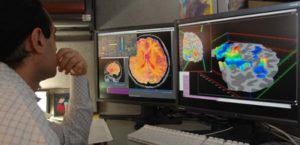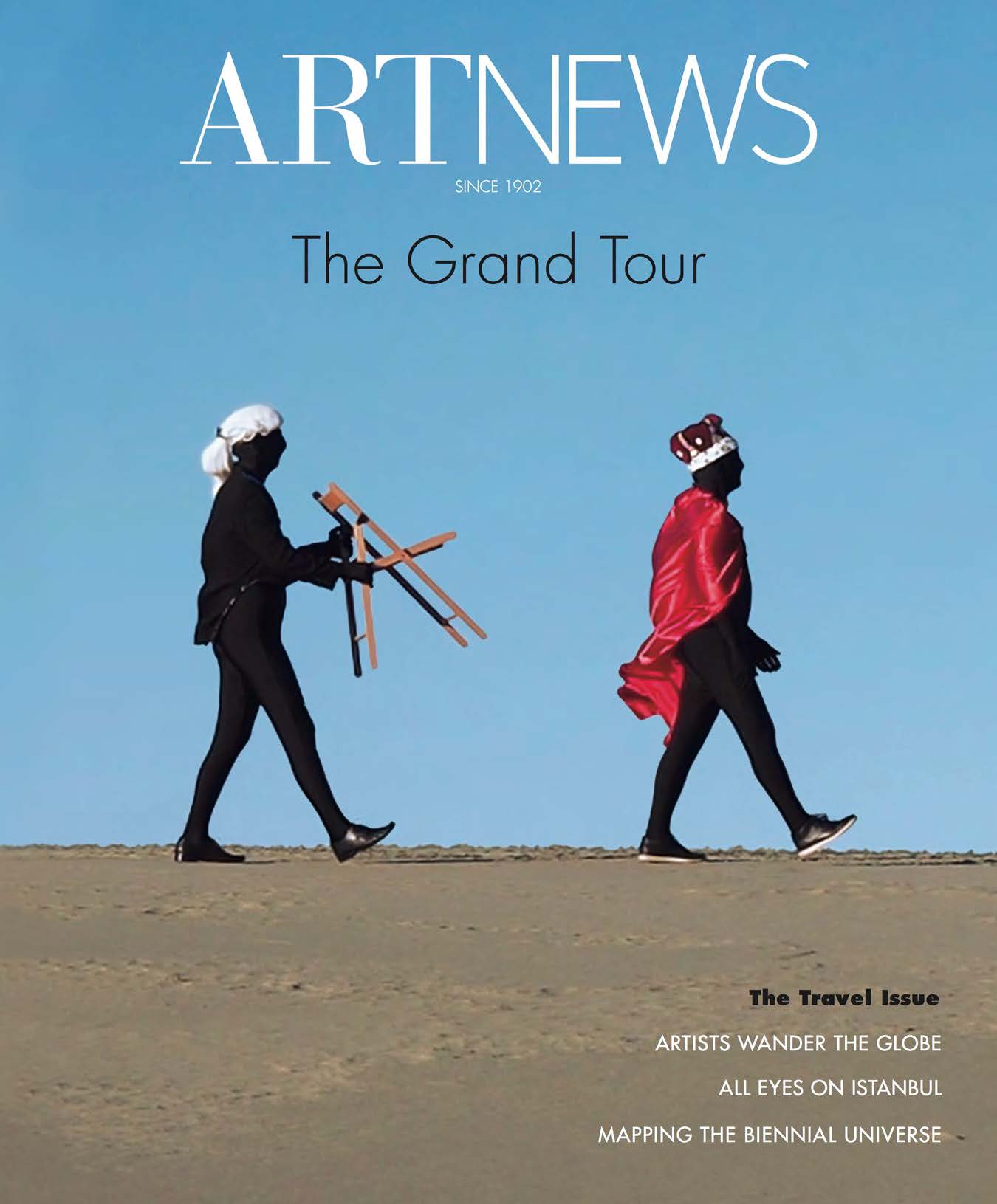(Al Bello/Getty Images)
Jeanne Calment, the French woman who holds the record for the longest verified lifespan, died in 1997 at 122 years old.
Few people, of course, ever become supercentenarians — 110 years old or older — and even fewer hit 115.

(Al Bello/Getty Images)
Jeanne Calment, the French woman who holds the record for the longest verified lifespan, died in 1997 at 122 years old.
Few people, of course, ever become supercentenarians — 110 years old or older — and even fewer hit 115.
An article discussing the benefits of rejuvenation for your friends and family.
Rejuvenation biotechnologies would bring significant benefits to individuals, but these benefits would indirectly extend to their families and friends too. The ways they can benefit from the rejuvenation of others might be not so obvious, so let’s have a look at them together.
Nearly everyone knows how terrible it is to lose people dear to you. Maybe your grandparents died when you were a child, and that might have been your first encounter with death, at an age when you still couldn’t properly comprehend it. Maybe it happened suddenly, or maybe your grandparents have suffered for long before passing away. Eventually, the moment comes when you start thinking that the same fate awaits your parents, your siblings, your friends. Rejuvenation would spare you seeing your elderly relatives and friends wilt away, suffer and die, because none of that would happen to them. Of course, rejuvenation would spare this pain to your friends and relatives too. Your children and grandchildren would never have to see you become sicker and sicker as you age, and would never—in principle—have to bury you. Today, being 80 means you often have to attend the funeral of a dear friend who passed away. People who have been important parts of your life just keep dying.

This is one of the first articles I’ve seen specifically on #Judiasm and #transhumaism, with input by rabbis. Naturally the article is cautious, but interesting too.
Transhumanism, an intellectual and cultural movement supporting the use of science and technology to improve human mental and physical characteristics and capacities, a concept once limited to the realm of science-fiction, is now becoming more of a reality than ever before. The once outlier philosophy is quickly becoming mainstream, an accepted part of the social conscience that is the new religion for the anti-religious, including its own Messianic vision.
There are many aspects to the transhumanism philosophy, often abbreviated as H+ or h+, including physical longevity through medical breakthroughs and/or merging mankind with machines. Many transhumanists advocate transferring the sum total of a person’s knowledge and experiences into a computer and recreating the individual as a form of artificial intelligence ( AI ) in order to extend an individual’s life.
In its most extreme form, transhumanism advocates limiting human population. This extreme philosophy is criticized for being eugenicist master-race ideology and infringing on basic reproductive rights.
Rabbi Avraham Arieh Trugman, director of Ohr Chadash Torah Institute, noted that as in any social reform, the driving intention behind the movement is the key element, the factor that decides whether it will be a positive or negative influence on human history.

Rudrapur, Uttrakhand, India — July 02, 2017
Revita Life Sciences, (http://revitalife.co.in) a biotechnology company focused on translational regenerative therapeutic applications, has announced that it is continuing to advance their novel, multi-modality clinical intervention in the state of brain death in humans.
“We have proactively continued to advance our multi-modality protocol, as an extended treatment before extubation, in an attempt to reverse the state of brain death” said Mr.Pranjal Agrawal, CEO Revita Life Sciences. “This treatment approach has yielded some very encouraging initial outcome signs, ranging from minor observations on blood pressure changes with response to painful stimuli, to eye opening and finger movements, with corresponding transient to permanent reversal changes in EEG patterns.”
This first exploratory study, entitled “Non-randomized, Open-labelled, Interventional, Single Group, and Proof of Concept Study with Multi-modality Approach in Cases of Brain Death Due to Traumatic Brain Injury Having Diffuse Axonal Injury” is ongoing at Anupam Hospital, Rudrapur, Uttrakhand. The intervention primarily involves intrathecal administration of minimal manipulated (processed at point of care) autologous stem cells derived from patient’s fat and bone marrow twice a week.

This study was inappropriately removed from the Indian Council of Medical Research (ICMR) database. ICMR has no regulatory oversight on such research in India.
The Central Drugs Standard Control Organization (CDSCO), Drug Controller General of India, had no objection to the program progressing. Regulatory approval as needed for new drugs, is currently not required when research is conducted on the recently deceased, although IRB and family consent is definitely required. CDSCO, the regulator of such studies, clearly states that “no regulatory requirements are needed for any study with minimal manipulated autologous stem cells in brain death subjects”.
Death is defined as the termination of all biological functions that sustain a living organism. Brain death, the complete and irreversible loss of brain function (including involuntary activity necessary to sustain life) as defined in the 1968 report of the Ad Hoc Committee of the Harvard Medical School, is the legal definition of human death in most countries around the world. Either directly through trauma, or indirectly through secondary disease indications, brain death is the final pathological state that over 60 million people globally transfer through each year.
“We are in process of publishing our initial retrospective results, as well ongoing early results, in a peer reviewed journal. These initial findings will prove invaluable to the future evolution of the program, as well as in progressing the development multi-modality regenerative therapeutics for the full range of the severe disorders of consciousness, including coma, PVS, the minimally conscious state, and a range of other degenerative CNS conditions in humans,” said Dr. Himanshu Bansal, Chief Scientific Officer, Revita Life Sciences and Director of Mother Cell.

With the maturation of the tools of medical science in the 21st century, especially cell therapies and regenerative medicines, tissues once considered irretrievable, may finally be able to be revived or rejuvenated. Hence many scientists believe that brain death, as presently defined, may one day be reversed. While the very long term goal is to find a solution for “re-infusing life”, the short term purpose of these types of studies is much less dramatic, which is to confirm if the current definition of brain irreversibility still holds true. There have been many anecdotal reports of brain death reversal across the world over the past decades in the scientific literature. Studies of this nature serve to verify and establish this very fact in a scientific and controlled manner. It will also one day give a fair chance to individuals, who are declared brain dead, especially after trauma.
About Revita Life Sciences
Revita Life Sciences is a biotechnology company focused on the development of stem cell therapies and regenerative medicine interventions that target areas of significant unmet medical need. Revita is led by Dr. Himanshu Bansal MD, who has spent over two decades developing novel MRI based classifications of spinal cord injuries as well as comprehensive treatment protocols with autologous tissues including bone marrow stem cells, Dural nerve grafts, nasal olfactory tissues, and omental transposition.
The June Journal Club video is now available for your viewing pleasure. Dr. Oliver Medvedik talks about telomeres and cellular reprogramming in this latest edition of our new live streamed monthly show.
It has been a busy few months since we launched our Lifespan Heroes campaign on Lifespan.io the aim of which is to help us expand the scale and scope of our activities.
June 27th saw our second monthly Journal Club, this is a regular live broadcast to our Facebook page where we discuss the latest scientific research papers hosted by Dr. Oliver Medvedik at the Cooper Union biotechnology lab.
The topic for the June Journal Club was the following paper :Marión, R. M., de Silanes, I. L., Mosteiro, L., Gamache, B., Abad, M., Guerra, C., … & Blasco, M. A. (2017). Common telomere changes during in vivo reprogramming and early stages of tumorigenesis. Stem cell reports, 8, 460–475.
Gearing up for clinical trials.
Liz discusses how we can overcome the limits on human health and lifespan; elaborating on BioViva’s role as a translational engine to provide access to cutting-edge therapies for those most in need.
http://journey100.org | Journey to 100 is a world-exclusive conference exploring ideas for a new and sustainable approach to lifelong health. The day kick starts a 10-year project that aims to make Guernsey the first community in the world to break through the 100-year life expectancy barrier.
Co-curated by the Dandelion Foundation and James Maskell, founder of Evolution of Medicine, and hosted by Dr Rangan Chatterjee, the BBC’s Doctor in the House, Journey to 100 hosted 20 leading global health, lifestyle and longevity experts.
Keith Comito introduces the Lifespan Heroes campaign and how we as a community can support the development of new therapies to treat age-related diseases for a healthier and longer life.
Link to the Lifespan Heroes campaign: https://www.lifespan.io/campaigns/join-us-become-a-lifespan-hero/
Link to all our campagins: https://www.lifespan.io
The perceived inevitability of death often pushes us to try to find meaning in it. In this article, I discussed why I think this has at least partly contributed to the cliché that death gives meaning to life.
The point of this blog is to advocate for rejuvenation therapies. In principle, it could be written without ever typing the word ‘death’, because rejuvenation is about keeping people healthy, and the indefinite postponement of death is merely a possible consequence of constant good health. In this sense, this and many other posts and articles on Rejuvenaction could be considered off-topic. However, it is not uncommon for people to accept, rather uncritically, the stale cliché according to which life gets its meaning from death, and without the latter, it would not have meaning. If rejuvenation can stave off death and extend lives indefinitely, will these extended lives be utterly meaningless?
No. Time and time again have I said this before, but I still fear that this misconception may be one of the worst enemies of rejuvenation; consequently, I spend much time thinking about its roots and how to debunk it.
Whether life gets its meaning from death or not, people who think it does implicitly admit that life has no meaning per se. In a general sense, this is correct. Life is meaningless, and there’s nothing wrong with it. It is no reason to be depressed, and I have explained why many times: Meaning is not an intrinsic property of anything. To paraphrase a common adage, meaning lies in the head of the beholder, and that’s where you should expect to find the meaning—if any—of anything, life included. In other words, it is up to you to find meaning in your life, and you should neither expect it to have meaning by default, nor let others decide for you what the meaning of your life is. This applies to everything else too. Whenever the meaning of X is being discussed, one should always ask to whom X means what, or who meant what when they did or said X. It goes without saying that, just like life, death has no intrinsic meaning either.

This is the oldest and largest art magazine by circulation in the world. For the first time, it has #transhumanism in its search engines. A main task of mine all these years has been spreading that word and concept. My talk at #Moogfest on the Immortality Bus is covered a bit in this story.
L ast month, as bidding was underway at Sotheby’s for what would prove to be a stratospheric Jean-Michel Basquiat sale, Lonnie Holley, a 67-year-old artist who was born in Birmingham, Alabama, and has worked for decades in various folksy and homegrown modes, was preparing to take the stage at a sports bar in Durham, North Carolina. He was sitting at a table in the back, in a place that stank of burgers and beer. An audience of a few dozen had convened for the occasion, though it was hard to distinguish between Holley fans and regular denizens of the Bullpen, a joint next door to the stadium for the beloved local minor-league baseball team, the Durham Bulls. Night-game lights were bright outside. Televisions above the bar showed the Bulls making easy work of the Gwinnett Braves, in town for a weekend series from Georgia. The air was thick and languid in the way it tends to be on a deep, hot Southern summer night.
Holley is a hero to some: as an artist, he has made formidable paintings and sculptures that have been collected by the Souls Grow Deep Foundation and exhibited by museums and institutions all over, and as a musician, he has forged an unforgettable sound with a stirring voice and stewing electronics. For all his accomplishments, though, Holley remains underappreciated—certainly not as known in the worlds of either art or music as he should be.
So first came an introduction. Tim Duffy, the founder of Music Maker Relief Foundation, an organization devoted to preserving musical traditions of the South, took to a microphone and lavished Holley with praise, running down a list of laurels and markers of a legacy still in the making. “Thumbs up for Mother Universe,” Duffy said, thankful for the cosmic conception of an artist he clearly revered.

Philadelphia, PA, USA / Moscow, Russia — Bioquark, Inc., (www.bioquark.com) a life sciences company focused on the development of novel bio-products for regeneration, disease reversion, and healthy aging, and Moscow based, Lakmus LLC, a diversified investment company with business interests in pharmacies, restaurants, and real estate, announced a multi-disciplinary research collaboration with the FSBI Zakusov Institute of Pharmacology, Russian Academy of Medical Sciences (http://www.academpharm.ru/), and the Pavlov Institute of Physiology of the Russian Academy of Sciences (http://www.infran.ru/), to jointly study the pharmacotherapeutic longevity enhancement properties of its combinatorial regenerative biologic candidates.
“We are very excited about this continued collaboration with Lakmus,” said Ira S. Pastor, CEO, Bioquark Inc. “The disciplined development of our combinatorial biologic candidates (Bioquantines) for healthy longevity enhancement, represents another important step in our continued evolution as a company focused on a broad range of therapeutic products and services in the regenerative healthcare space.”
Throughout the 20th century, natural products formed the basis for a majority of all pharmaceuticals, biologics, and consumer healthcare products used by patients around the globe, generating trillions of dollars of wealth. However, many scientists believe we have only touched the surface with what the natural world, and its range of organisms, which from a health and wellness perspective are much further advanced than human beings, has to teach us.
The integration of a complex set of newer research disciplines, including interkingdom signaling, semiochemical communication, and evolutionary biology, as well as significant recent activity in the areas of the microbiome, are highlighting a myriad of new ways that non-human bio-products can affect the human genome for positive transitions in health and wellness dynamics.
“Bioquark has spent several years studying the natural ability of many species to turn back biological time in order to maintain health, fitness, and survival, developing a broad understanding of the combinatorial biochemical approaches they use to control nested hierarchies of disease (i.e. gene, cell, tissue, organism, environment),” said Dr. Sergei Paylian, Founder, CSO, and President, Bioquark Inc. “This research initiative is one more step in the path in allowing humans to recapture these capabilities to effectively counter our unfortunate progression into aging, disease and degeneration.”
About Bioquark, Inc.
Bioquark Inc. is focused on the development of natural biologic based products, services, and technologies, with the goal of curing a wide range of diseases, as well as effecting complex regeneration. Bioquark is developing both biological pharmaceutical candidates, as well as products for the global consumer health and wellness market segments.